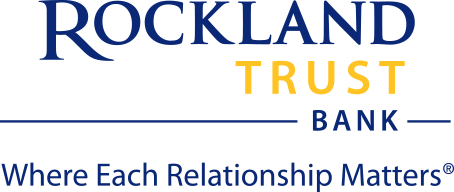Written by Steve Andrews

If you’ve flown in an airplane, you’ve likely experienced a time when the plane flies through the clouds. This can be unsettling if you can't see what's ahead of you (or above and below). The unease doesn’t turn to panic because everything else seems fine; the plane continues to roar along, and the flight attendants are doing their jobs in a carefree fashion. You’d just feel better if the clouds were gone.
Markets in Flux Post-Election
The markets have been in similar state of flux since the November elections. The Trump Administration is seeking to enact new policies, both foreign and domestic, and investors are still trying to wrap their heads around the changes. Tariffs lead the list among the concerns for both the inflation and the economy. Tariffs had little inflationary impact during Trump 1.0, and we're not convinced that they will have much impact this time around. Of greater concern is whether tariffs could usher in a global trade war.
Back in November, following the elections, we cautioned readers to expect a bumpy ride this first quarter. The markets have been choppy over the past few months but, like our passengers flying through the clouds up above, the economy continues to forge ahead.
Federal Reserve Strategy
Last month, we discussed the sharp rise in long-term US interest rates. Since then, long-term US interest rates have moderated, with the yield on the 10-year Treasury down about a quarter-point (25 basis points) from 4.80% in mid-January. New Treasury Secretary Scott Bessent has said that the Trump Administration will not pressure the Fed to lower short-term rates (as they did during Trump's first term) and will focus more on the 10-year Treasury rate.
They believe that by deregulating the economy, extending tax cuts, and by reducing energy costs, lower interest rates will happen on their own. In addition, any progress in slowing the rise in the federal deficit will help long rates. Prior to being chosen to head the US Treasury Department, Secretary Bessent had been critical of former Secretary Janet Yellen’s approach of funding our massive deficit primarily with T-Bills and other short maturity debt instruments. However, Bessent stated that, for the next few quarters at least, the Treasury would continue Yellen’s approach.
Positive Economic Indicators
While we’re on the topic of interest rates, the Fed is showing little inclination to cut the Fed Funds rate again any time soon. In mid-month, Fed Chair Jerome Powell gave his semi-annual testimony before Congress where he said that the US economy remains strong, so “we do not need to be in a hurry to adjust our policy stance.” Powell added that “If the labor market were to weaken unexpectedly or inflation were to fall more quickly than anticipated, we can ease policy accordingly.” That’s Fed-speak reiterating that the Fed will remain data-dependent as they determine US monetary policy.
To underscore Powell’s view, the economy added 143,000 nonfarm payroll jobs in January, and revisions to November and December payrolls added another 100,000 which made the January gain more like 243,000. Meanwhile, the Unemployment Rate edged down to 4.0%. The Labor Force Participation Rate increased to 62.6% from 62.5% and average hourly earnings rose 0.5%, lifting wages up 4.1% from a year ago, well ahead of inflation. Private sector payrolls have been growing by 209,000, on average, over the past three months.
Recovery in Manufacturing, Housing, and Consumer Confidence
There have also been positive developments of late for several economic “laggards.” First off, the US manufacturing sector continues to climb back into growth mode, with the ISM Manufacturing Index moving into expansion territory (50.9) in January for the first time since October 2022. Optimism among manufacturers in January was the strongest in over a decade when we exclude the two months following the reopening of the economy after the pandemic. The moribund manufacturing sector has come back to life over the past three or four months, as rising consumer demand and business confidence have encouraged manufacturers to rebuild inventories.
In addition, the US housing market is showing signs of improvement. New Home Sales rose 3.6% in December, lifting 2024 sales up 6.7% from the year before. Buyers seem to have gotten over the sticker shock from 7.00% mortgages as they turn to the rising supply of new homes - up 275% from their 2022 low.
US consumers, who have done as much as anyone to keep the economy afloat in the face of sharply higher interest rates over the past 30 months, and whose imminent demise (predicted since 2023) has yet to come to fruition, keep on spending. They have continued to spend even as, over the past 18 months, consumer optimism has been tepid, at best. A recent poll by The Economist found that 36% of Americans now feel that they expect their household finances to be better off a year from now – up from 28% prior to the elections.
Inflation and Economic Outlook
One lingering problem is that inflation remains persistent. Consumer Prices (CPI) in January rose 0.5% from December, lifting CPI 3.0% above a year ago – up from 2.9% in December – led by food (eggs especially) and energy costs. Shelter (housing) costs rose 0.4% - up 4.4% from January 2024, but a bit better than the 4.6% increase in December. Sticky inflation, along with a growing economy, is why the most recent Fed Funds futures point to no (or perhaps one) rate cuts this year.
While some lament that “hopes” for additional rate cuts have been dashed, we agree with the US Treasury’s assessment that long-term rates are more important and any headway made in slowing runaway federal spending would lessen the need for adding debt. This in turn, would lower supply in the Treasury bond market and pull rates lower. If inflation eventually recedes to the Fed’s 2.0% target, this will add more downward pressure to interest rates.
In Conclusion
US GDP grew 2.8% last year and early signs point to another quarter of similar growth here in Q1. It will take another month or two before the clouds of uncertainty clear, but the economy shouldn’t have too much trouble weathering the rough patch. For now, the economy has shown that it can thrive in the current rate environment where interest rates sit near their long-term historical averages.





